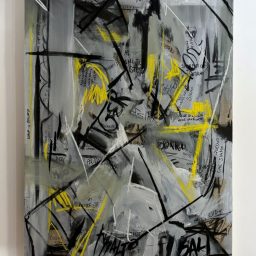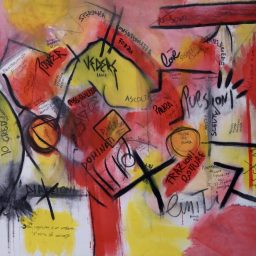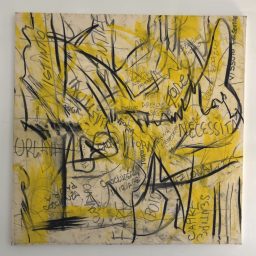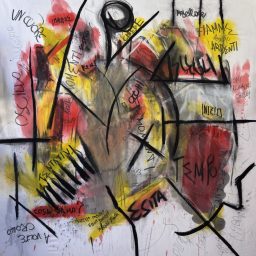Niccolò Fornari (Rome, 1996) is a non-figurative visual artist whose pictorial research also extends into the realm of text-based art.
His practice revolves around an introspective investigation, focused on analyzing his own emotional flows and inner oscillations, which he refers to as “andamenti” (patterns or movements). These states are expressed through the interaction of sign, script, and color, in a gestural and textual painting that alternates between density and rarity, engaging in a continuous dialogue between the conscious and the unconscious.
After graduating in 2015 from the European Linguistic High School, he initially approached architecture and fashion design—experiences that contributed to shaping his visual language, marked by a strong sense of structure and composition.
Indeed, the design dimension remains a constant in his work, even when translated into the pictorial sphere, informing the construction of his painted realities.
In 2024, he earned a degree in Painting from the Academy of Fine Arts in Rome, under the guidance of professors Giuseppe Di Lorenzo and Sergio Sarra. His thesis focused on the work of three masters of Abstract Expressionism whom he regards as key references for his artistic path: Willem de Kooning, Emilio Vedova, and Franz Kline, with an in-depth exploration of their radical commitment to a form of painting that transcends figurative boundaries, opening up new expressive and communicative possibilities.
In December 2024, he inaugurated his first solo exhibition at the Fiorano exhibition space, part of the Gallerja directed by Alessandro Boncompagni Ludovisi, curated by Ofelia Sisca. That same year, he also participated in the YICCA – International Contest of Contemporary Art, expanding his visibility within the contemporary art scene.
His work continues to evolve in a constant tension between impulse and reflection, between writing and gesture, sustaining a research practice that draws from the personal to reach toward a universal dimension.





